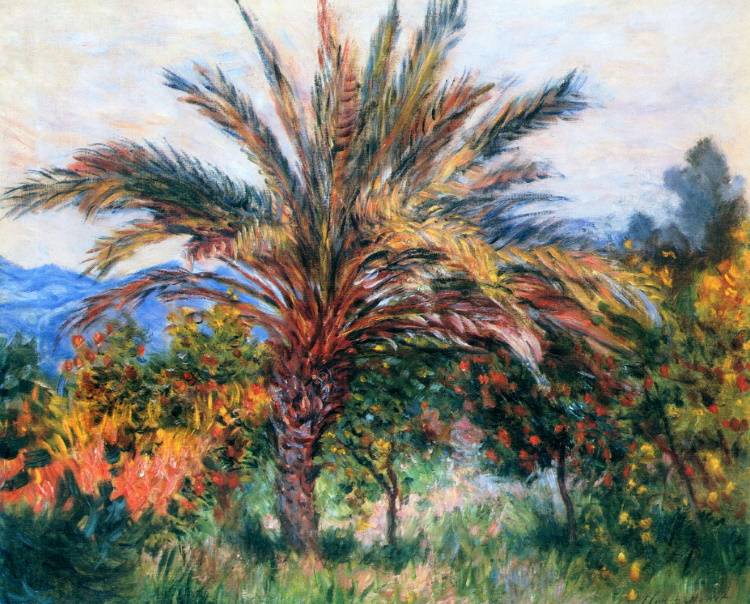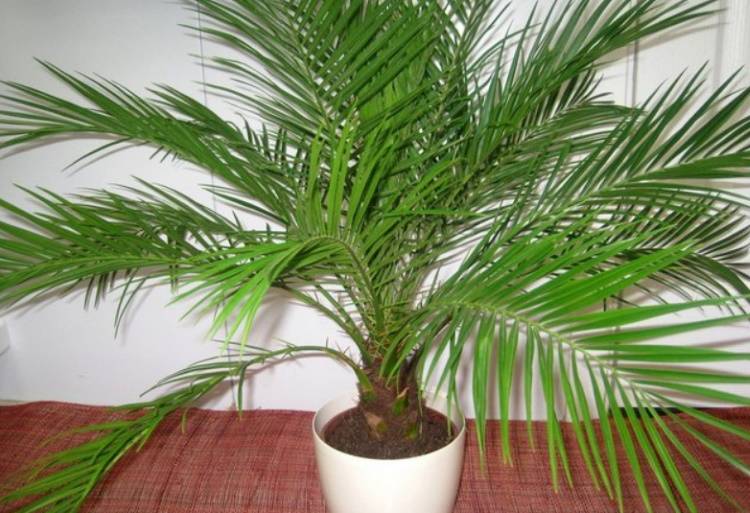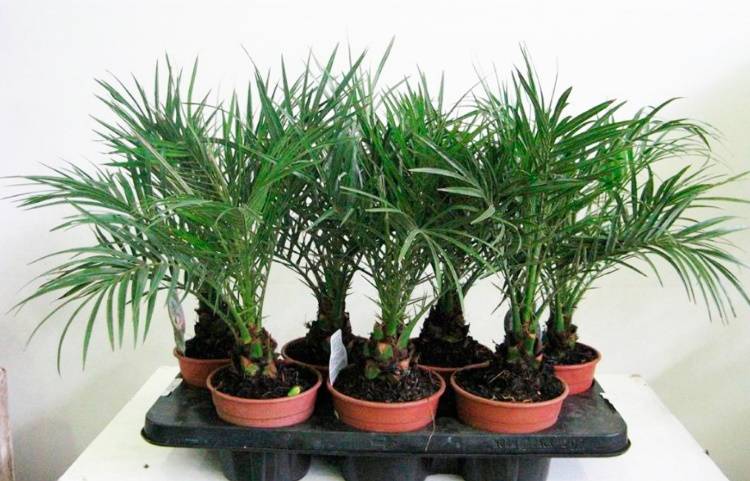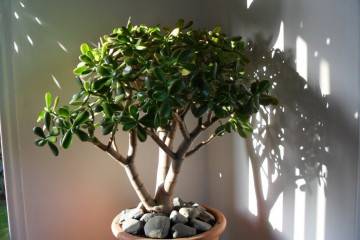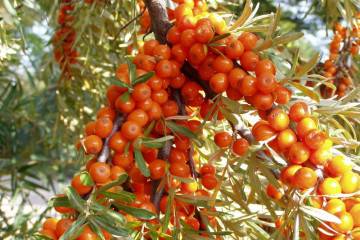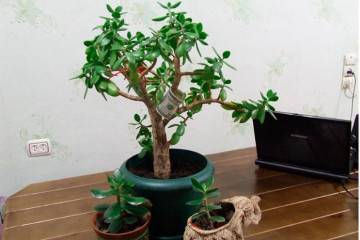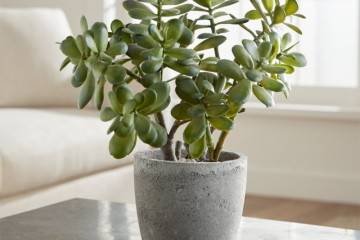Date fruits - a fruit-bearing tree at home
Content:
The dried fruit of the date palm is a delicacy for the people of the northern countries and the daily food of the inhabitants of the southern tropical regions. Once in the countries of the Arab East, dates were the main food, they were called the bread of the deserts, and the palms on which they grew were trees of prosperity.
Date palm history
Archaeological finds indicate that the Phoenix palm tree and edible dates were used by people who lived as far back as the Neolithic era.
In the shade of date palms, other edible plants grew, which were cultivated by the local population and were included in the list of agricultural crops.
Palm date trees in many countries were of cult significance:
- In ancient Egypt, palm leaves were a symbol of the sacred Phoenix bird and were used to wrap mummies.
- In Israel, the end of the date harvest was celebrated.
- The biblical Christ was originally symbolized by palm branches.
- The Greeks at the Olympic Games honored the winners with palm branches.
- In Islam, at the end of the Ramadan fast, a Muslim eats 3 dates.
The ancient people believed that the palm tree, regardless of the circumstances, always grows upright and therefore its branch is rightfully a sign of courage and stamina.
The distribution area of the date palm
For thousands of years, date plantations have been cultivated in Ancient Egypt, in the territories of modern Pakistan, Iraq, Iran, on the Arabian Peninsula and North Africa. The southern states of the USA, Mexico, India, Burma, Australia, the Canary Islands, and the countries of South America have now joined the traditional growing regions, thanks to selection achievements.
The modern society values the dates tree not only as a food supplier. For people of art, palm trees are a source of inspiration for painting paintings. Paintings depicting date palms by artists Martiros Saryan, Paul Gauguin, Claude Monet gained worldwide fame.
Types of date trees - Phoenix palms
Modern technologies of cultivation of date palms make it possible to harvest from one tree over 4-8 years old from 70 to 200 kg of fruits per season. Trees with a female flower structure bear fruit. The plantations are dominated by female trees. Male trees are grown separately, from which pollen is collected, and then female trees are manually pollinated.
Date honey is obtained in places where trees are grown. Fresh fruits are used to prepare jams, preserves, and dates are mainly sold in the form of dried fruits. There are also pitted dried dates - which these products are well known to culinary experts. They are used for baking pastries, making desserts and drinks.
How much sugar is in dried dates with pits can be judged by the description of the energy value of the product.The calorie content of one date weighing 8-9 g is 23 kcal. The fruit contains 0.03 g of fat, 6.23 g of carbohydrates (of which 5.26 g of sugar, 0.7 g of fiber), 0.2 g of protein.
For growing crops on an industrial scale, several types of palms are used, on which fruits grow, differing in shape and degree of softness when ripe. In shape, dates can be oval, ovoid, elongated.
By their softness in a mature form, dates are:
- Dry, with a fruit moisture content of less than 18%.
- Semi-dry - humidity 18-20%.
- Soft - humidity 20-23%.
The maturity of dates is denoted by the following terms:
- milk ripeness - character (hard, dry fruits);
- ripe - rotab (have a soft tender structure).
In cold climates, date trees are grown in greenhouses and as houseplants.
Finger dates (Phoenix dactylifera)
It belongs to the most popular and highly productive tree species. The varieties of Phoenix dactylifera differ in the quality and properties of the fruits:
- soft dates are harvested from trees of the varieties Halawy, Khadrawy, Medjool, Barhee;
- Dayri, Zahidi, Deglet Noor varieties bear fruit with semi-dry berries;
- The Thoory variety produces dry fruits when ripe.
The most common outdoor varieties of Phoenix dactylifera include Zahidi, Medjool, Deglet Noor.
Deglet Noor has the advantage of light, honey-flavored berries. The name of the variety, translated from Arabic, means “finger of the universe”.
Medjool trees have a beautiful appearance, under favorable conditions they can grow up to a height of 30 m. These palms form a lush crown of silvery-green foliage.
Palms of the Zahidi variety are slightly inferior in decorativeness to those of the Medjool variety, but they have a high yield and fruits of fairly good quality.
Canarian date (Phoenix canariensis)
The tree owes its name to its main habitat - the Canary Islands. In nature, it grows up to 15 m. Its orange-yellow small fruits are not used for food. One of the varieties of the Canary palm tree - Luxor has gained fame as the most common indoor tree. A plant at a young age is a shrub that grows strongly in width, which grows a trunk as it grows. It has thin leaves with pointed tips up to 4 m long, which can injure the skin.
The Canary date at home requires some care. The tree should grow in high humidity in a place well and evenly illuminated by the sun. If it is not possible to pick up such a place, then the container with the plant is periodically turned towards the light in different directions, and devices that increase the humidity level are either installed nearby, or manual spraying is carried out as often as possible.
Phoenix roebelenii
A miniature, slowly developing palm tree Phoenix roebelenii does not grow higher than 3 m in height, has a wide crown. Lamellar leaves up to 1.2 m long are painted in a gray-green hue and are covered with a fluffy bloom from the inside. Used for landscaping large office spaces, feels good on insulated loggias. Grown at home, in winter gardens, in greenhouses.
The dwarf tree, sometimes called the timid date, can withstand partial shade and temperatures as low as -3 degrees. Botanists decided to name this type of palm in honor of Karl Roebelen, who became famous at the beginning of the 20th century for his collection of orchids.
Date palm care at home
Date palms are grown at home if it is possible to provide the plants with optimal growth conditions and proper care.
Adult plants need to provide:
- a room with an air temperature in summer up to + 30-35, in winter within + 12-18 degrees;
- bright sunlight in summer, with shade at noon, and sufficient light in winter;
- air humidity level not less than 70%;
- regular watering with soft water;
- fertile soil and top dressing;
- volumetric planting containers in which drainage holes are made.
Indoor Date palms are grown from ready-made seedlings, which can be purchased in flower shops or from seeds. Up to 5 years of age, young plants are transplanted annually, and then they regularly carry out partial soil replacement.
How to grow a date palm from seed
You can plant a bone from eaten fresh, dried or dried dates. To speed up the germination process, the hard coating of the bones is rubbed with fine-grained sandpaper or a file. After that, for 3-5 days, they are placed in a shallow plastic container in a warm place between a pair of wet cotton pads. Top up with warm water if necessary.
Tank and soil preparation
Prepare a planting container with a volume of up to 1.0 L with high thin plastic walls, which can be easily cut later. 3-4 drainage holes are made in the bottom. A ¾ pot is filled with a soil substrate consisting of leafy, soddy soil, sand, humus, peat - all components are taken in equal volumes. The mixture should be sufficiently loose and nutritious.
The earth is either disinfected with a pink solution of potassium permanganate, or warmed up at temperatures above 100 degrees, and then spilled with a solution of "Fitosporin-M". Two days before planting, the substrate is moistened. Planting is carried out in moist but not wet soil. The pot is placed in a warm, shaded place from bright light.
Planting and leaving
The bone is planted in an upright position, which end does not matter, because the sprout appears from the center of the bone. It is deepened into the ground so that there is a layer of soil of at least 1 cm above the bone.The seed will germinate in the ground from 30 to 90 days. Throughout this period, the soil in the pot should be slightly moistened. The earth is watered after its top layer begins to dry. Moisture stagnation in the lower part of the planting container must not be allowed.
Seedling transplant
When a seedling appears, the container is rearranged closer to the diffused light, the air temperature should be at least +20 degrees. The root system of the date develops very quickly. A 3-4-month-old seedling planted in early spring will need to be transplanted into a larger container by autumn. The transplant is carried out in a gentle way - by the transshipment method without damaging the earthen coma. The soil should be loose and fertile.
Date palm seedling care
Drying and waterlogging of the soil is harmful to young plants. During transplantation, a layer of drainage material is poured onto the bottom of the new pot. Water your palms more often in summer than in winter. In summer, after watering, the water is not immediately drained from the lower pan. In 2-3 hours, the moisture will completely saturate the entire earthen lump, after which the water must be drained completely.
Top dressing of young and adult palms
When transplanted, young palms receive nutritious soil, therefore, they do not need additional fertilizing during the first 2-3 months after taking root in a new place. But, since they quickly form the root system, leaves and stems, they can stop their development without subsequent regular fertilization.
Date trees begin to feed in early spring and continue throughout the summer. The frequency of feeding depends on the age of the plant. Young palms are watered with fertilizer solutions every 2 weeks, trees over 5 years old - once a month. During the period of autumn-winter dormancy, trees are rarely watered and fed no more than once every 3 months.
Transplanting date palms
Many growers do not know why it is so important to transplant a palm tree on time.The reason for this is the plant roots protruding from the ground. If it is impossible to transplant on time, the root shoots raised above the ground are covered with moist moss.
Palms over 1 year old and up to 5 years old are transplanted annually. Mature trees - as needed, every 3-4 years, while every spring, carefully, along the edges of the pot or tub, remove the surface layer of soil and add new nutrient. The transplant is carried out in mid-spring, when the length of daylight hours increases significantly.
From the trees, only annually dying, starting to turn yellow and already dried leaves are cut off. When pruning, petioles are left with a length of 2-3 cm. They protect the bark and give the tree trunk a three-dimensional appearance.
Diseases and pests of the date palm
In summer, after night temperatures rise above + 14 degrees, the plant can be taken out into fresh air. But in street conditions, spider mites, scale insects, aphids can settle on trees. Therefore, the plants are preliminarily sprayed with water with a systemic insecticide dissolved in it.
So that plants do not suffer from fungal infections in conditions of high air humidity during summer watering, once every 3 months they do basic watering with the addition of a biofungicidal agent.
With normal care, a date tree at home can live for several decades. Of course, the plant will not bear fruit, will not grow to such a height as it could under natural conditions. But you can buy its fruits in the store, but you can enjoy its beauty every day.


